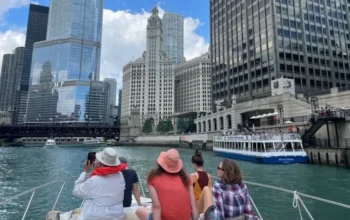The Muktinath Yatra is a journey of worship, drawing pilgrims from all parts of India to this Himalayan temple in Mustang. But those with chronic conditions such as diabetes or heart disease often ask-if it is so safe to undertake this high-altitude trip? This guide, therefore, includes practical steps and medical precautions, planning tips considered essential for any health-sensitive traveler wishing to undertake the Muktinath Yatra successfully and safely.
Understanding the Challenges of the Muktinath Route
Muktinath is at the altitude of 3,710 meters, which implies that the process consists in the serious elevation gain, low level of oxygen, and cold temperatures. These conditions have the capability of causing unpredictable blood sugar levels, lack of energy, and even dehydration to diabetics. In a heart patient, decreased oxygen pressure can result to difficulty in breathing, abnormal heart rate or chest pains. There are also bumpy roads, primitive bedding, and the lack of medical places in remote locations. This is why prior planning is very important when you know what you need health wise before you embark on this pilgrimage.
How Altitude Affects Diabetics and Heart Patients
High-altitude conditions change how the body functions. Diabetics may find that their sugar levels fluctuate more than usual, especially with physical exertion and irregular meals. The cold can also affect how insulin is absorbed.
For those with heart issues, the drop in oxygen can place extra strain on the heart and circulation. Symptoms like dizziness nausea or pressure in the chest should not be ignored. This makes acclimatization and gradual travel pacing very important for your safety.
Pre-Travel Medical Checklist
Prior to proceeding Yatra, consult a health care professional and undergo health assessment. The major checks are:
- ECG or treadmill test for heart function
- HbA1c test and fasting sugar for diabetics
- Review of current medications and dose adjustments
- Clearance for high-altitude travel
- Recommendation for carrying portable oxygen or altitude medicine like Diamox (if needed)
Always carry a summary of your health status, doctor’s note, and emergency contacts in writing. This can help local healthcare providers assist you quickly if needed.
Best Time to Travel for Patients with Health Conditions
Choosing the right month can make a big difference in how well your body handles the journey. The most suitable months for travel are:
- March to May – Weather is stable, and the temperatures are moderate
- September to November – Post-monsoon months offer clear skies and less humidity
Avoid:
- June to August (Monsoon) – Roads may be blocked by landslides, and infections are more common
- December to February (Winter) – The cold becomes harsh and oxygen levels drop further, making it harder for the heart and lungs
Planning your yatra during a safer window gives you more control over your health and overall comfort.
Food and Nutrition Tips on the Muktinath Route
The food available during the Yatra becomes simpler and less diverse as you go higher. For diabetics, it’s essential to avoid sweetened teas, fried snacks, and high-carb meals. Instead, carry your own healthy snacks like roasted chana, dry fruits, sugar-free protein bars, and multigrain biscuits.
Heart patients should avoid high-salt and oily foods. Ask for plain dal-rice, boiled vegetables, and rotis without added ghee. Always drink boiled or bottled water, and avoid raw or cold foods that could cause stomach infections.
Proper nutrition supports your energy levels, stabilizes your sugar and pressure, and reduces stress on your body.
Medical Facilities Along the Muktinath Route
Access to proper healthcare on the route is limited, but not absent. Here’s what to expect:
Kathmandu
Advanced hospitals like Norvic or CIWEC Clinic offer excellent facilities and can be used for pre-travel check-ups.
Pokhara
Hospitals like Pokhara Grande and Manipal offer emergency care and diagnostics. It’s a key stop before heading towards Mustang.
Jomsom
Basic medical services are available. You can find oxygen cylinders, first aid, and minor treatment support.
Ranipauwa (near Muktinath)
A small health post is present and may offer basic care, especially during the main travel seasons.
Those booking through a Nepal tour package from Gorakhpur should check if the operator provides access to emergency contacts and oxygen facilities as part of the package.
Safety Tips for Diabetics During the Yatra
- Carry a glucometer and check your sugar daily
- Eat at regular intervals to avoid low blood sugar
- Avoid sweets, sweet tea, and high-carb meals
- Keep your insulin properly stored and accessible
- Stay hydrated with clean water and ORS if needed
- Rest well and avoid over-exertion
Heart Patient Travel Tips for Muktinath
- Walk at a slow, comfortable pace
- Use walking sticks for balance
- Carry emergency heart medication (e.g., Sorbitrate)
- Avoid cold exposure by dressing in layers
- Take frequent breaks, especially while climbing
- Monitor your oxygen levels using a fingertip oximeter
If you’re opting for a Muktinath tour package from Gorakhpur, ask whether the travel schedule includes slow-paced routes, overnight stops, and backup oxygen—these are especially helpful for cardiac patients.
What to Pack in Your Personal Medical Kit
Every traveler with a health condition should carry a customized medical kit. Essentials include:
- Regular medications with extra doses
- Glucometer and BP monitor
- Diamox, if prescribed
- First-aid items, ORS, antacids
- Sugar tablets or dry fruits for emergencies
- A medical ID card with condition, medication list, and emergency contact
Can You Travel Without Trekking? Safer Travel Options
If trekking is difficult, you can still reach Muktinath via alternative modes:
- By road – Jeep travel from Pokhara to Jomsom, then Ranipauwa
- By helicopter – Available from Pokhara or Jomsom to Muktinath
These options reduce physical stress, making the trip more manageable for health-sensitive pilgrims.
When to Cancel or Postpone the Trip
You should delay the yatra if:
- Your blood sugar is uncontrolled
- Blood pressure is unusually high
- You recently had surgery or a major health event
- Your doctor strongly advises against travel
Health comes first. Muktinath will welcome you when you are ready — physically and mentally.
Evacuation Options and Travel Insurance Advice
Travel insurance is highly recommended. It can cover:
- Medical emergencies and hospital stays
- Helicopter rescue if needed
- Trip cancellations due to sudden health issues
Helicopter evacuation from Muktinath can be expensive without insurance. Always confirm your policy includes high-altitude coverage and pre-existing conditions.
Final Thoughts – With Faith, Comes Responsibility
Muktinath is a place of peace, liberation, and spiritual grace. But the mountains demand respect. For diabetics and heart patients, the yatra can be fulfilling and safe if planned with care, preparation, and medical awareness.
Let your devotion be your strength — but let your discipline be your protection.
With the right steps, this journey can be both soulful and secure.
Meta Description
Is the Muktinath Yatra safe for diabetics and heart patients? This complete guide shares medical tips, travel timing, nutrition advice, hospital access, and precautions for a safe and soulful yatra.





